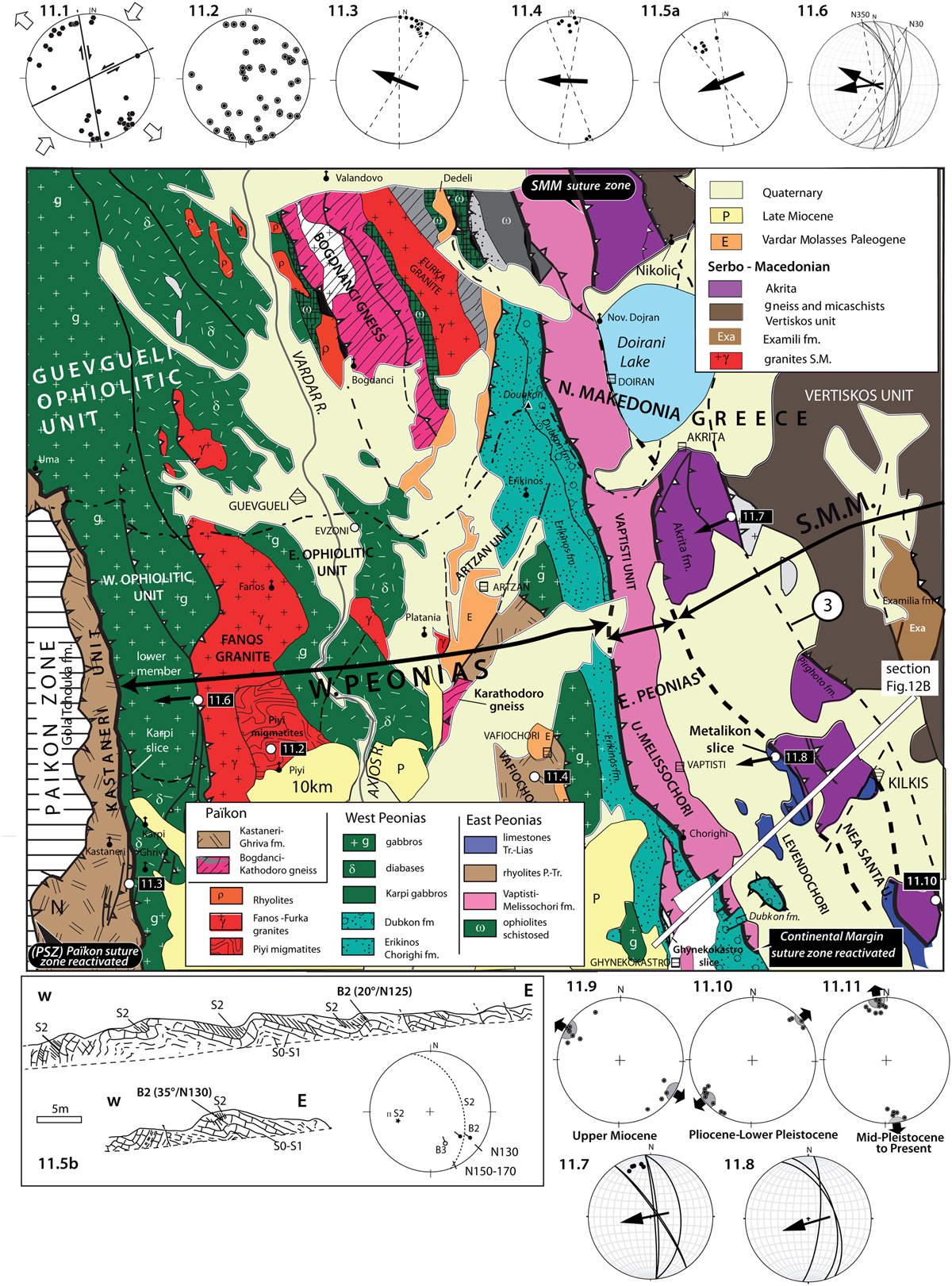Fig. 11

Download original image
Structural sketch of the Western and Eastern Peonias units (north of Thessaloniki). Same symbols as on Fig. 4B; (11.1) poles of dykes of the sheeted dyke complex, after restoring the pillow lavas to an horizontal position (after Bébien and Gagny, 1978); they indicate ≈NNE shortening and ≈WNW lengthening principal strain axes; (11.2) fold axes of the folded and stretched diabase blocks in the Piyi migmatites; they result from a viscous run-off flow (Mercier’s data already published in Bébien’s thesis, 1982); (11.3) poles of similar folds with a western vergence affecting the Ghriva marbles (see Fig. 10.4), below the Guevgueli ophiolitic thrust (D1 event); (11.4) poles of the similar folds in the Vafiochori unit below the ophiolite thrust (D1 event); (11.5a) (B2) folds affecting limestones of the Kastaneri formation, striking N120–130°E with a strain-slip cleavage (D3 event), located south of the Paikon Massif (cross sections on cartoon 11.5b) (north of the Eleftherochorio village, north of pt. 23 on Fig. 8B); (11.6) reverse fault planes, with a western vergence, along the NNW-SSE striking major fault that separates the western unit of the ophiolitic massif from the Fanos Massif; (11.7) reverse faults along the major fault, striking NNW-SSE, with a top-to-the-W vergence that separates the SMM from the Eastern Peonias zone in the area south of the Doirani Lake; (11.8) near Metallikon.
Current usage metrics show cumulative count of Article Views (full-text article views including HTML views, PDF and ePub downloads, according to the available data) and Abstracts Views on Vision4Press platform.
Data correspond to usage on the plateform after 2015. The current usage metrics is available 48-96 hours after online publication and is updated daily on week days.
Initial download of the metrics may take a while.




